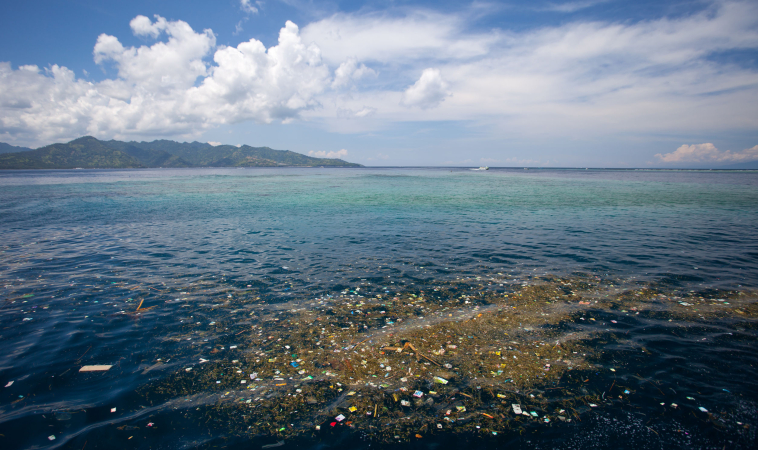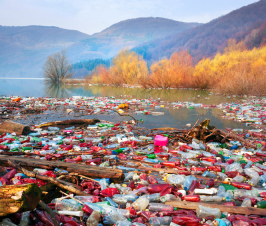The effect of plastics on our environment and physiology is becoming more and more discussed. A recent study conducted by the Austrian Federal Environmental Agency and the Medical University of Vienna has looked at the health risks of microplastic particles in humans. The German Federal Institute for Risk Assessment (BfR) has in turn summarized the findings and released these to the public.1
The BfG summary is listed below in its entirety, and a PDF file can be accessed via the link below.
Microplastics in food
The BfR has no reliable data on the chemical composition, particle size and content of microplastic particles in foodstuffs. Due to the lack of reliable data, a health risk assessment for the consumption of food contaminated with microplastic particles is currently only possible to a limited extent. At the request of the BfR, the European Food Safety Authority (EFSA) prepared a comprehensive scientific opinion on the “Presence of microplastics and nanoplastics in food, with particular focus on seafood”. This opinion was published in May 2016: https://www.efsa.europa.eu/de/efsajournal/pub/4501 (EFSA 2016). The main aspects of the opinion were underlined in an accompanying press release: https://www.efsa.europa.eu/de/press/news/160623 (EFSA 2016a)
According to EFSA, there is a possibility of oral absorption of microplastic particles of a certain size, although the fate and possible degradation in the gastrointestinal tract have not been sufficiently investigated so far due to a lack of analytical methods and valid studies.
According to EFSA, available studies show that intestinal absorption appears to be very low (results from rodent studies). According to EFSA, only microparticles smaller than 150 mi-crometers (μm, 1 μm corresponds to 0.001 mm) can cross the intestinal barrier and only mi-croparticles smaller than 1.5 μm can reach organs located deeper. No results from human studies are currently available.
First investigations of the BfR on cultures of human intestinal epithelial cells
First own investigations of the BfR on cultures of human intestinal epithelial cells as well as in animal experiments showed that plastic particles up to a diameter of approx. 4 μm can be absorbed in the cell culture of epithelial cells of the intestinal wall. In animal experiments, however, it was shown that despite the administration of very large amounts of plastic particles in the size of 1 – 10 μm, these could only be found sporadically in the examined intestinal epithelial cells. The studies on the oral uptake of microplastic particles carried out at the BfR to date with various model particles did not reveal any evidence of damage to the intestinal tissue.
The BfR does not have any findings on the question of whether microplastic particles can deposit in the body.
Microplastics in cosmetic products
According to the current state of knowledge, a health risk from dermal or unintended oral absorption via peelings or shower gels is unlikely from the point of view of the BfR, since the microplastic particles occurring there are larger than 1 μm. With this particle size, absorption via healthy and intact skin is not to be expected with foreseeable use of the products. Even if cosmetic products are accidentally swallowed,it can be assumed that absorption via the gastrointestinal tract would only be possible to a small extent and only with particles of a few micrometers in size, and that the majority of the particles are excreted via the stool. From the point of view of the BfR, it is unlikely that health-relevant amounts of ethylene from polyethylene are released by microplastic particles during the passage through the gastrointestinal tract.
Microplastics as transport vehicles for other undesirable substances
It has been described that substances can accumulate on microplastic particles. These substances bind according to their chemical-physical surface properties and can interact with the microplastic particles. Due to the predominantly non-polar, lipophilic (= fat-loving) properties of microplastic particles, substances such aspolychlorinated biphenyls (PCBs) or polycyclic aromatic hydrocarbons (PAHs) are discussed here. Whether these substances actually con-tribute to human exposure through uptake by loaded microplastic particles has not yet been researched.
EFSA model calculation (EFSA 2016a)
An EFSA model calculation (EFSA 2016a) shows that the daily intake of PCBs and PAHs through the consumption of contaminated microplastic particles in mussels can only increase by 0.006 % for PCBs and less than 0.004 % for PAHs compared to other intake pathways.
Extreme case: 225 g of mussels containing 7 μg microplastic particles per kg of mussels
It was assumed in the extreme case that 225 g of mussels containing 7 μg microplastic particles per kg of mussels (equivalent to 900 particles) were consumed daily by humans. These mussels in turn contain high levels of PCBs and PAHs, of which the PCBs and PAHs are completely transferred to humans.
Biofilms can develop from bacteria on particles that float
It has been described that biofilms can develop from bacteria on particles that float, for example, in water. Whether and to what extent microplastic particles can act as vehicles for bacteria or viruses that have an influence on the safety of food products or the health of hu-mans has not been investigated.
Avoidance of the absorption of microplastics by humans
Sources of microplastic particle inputs into the environment and the food chain are manifold. Generally valid recommendations for protective measures cannot currently be formulated. There is a great need for research into the question of whether and under what conditions microplastic particles can have a potential hazard. Entrance paths for microplastic particles into the environment and the food chain must be further researched and solutions for the avoidance of inputs must be sought.
 Razi Berry is the founder and publisher of the journal Naturopathic Doctor News & Review that has been in print since 2005 and the premier consumer-faced website of naturopathic medicine, NaturalPath. She is the host of The Natural Cancer Prevention Summit and The Heart Revolution-Heal, Empower and Follow Your Heart, and the popular 10 week Sugar Free Summer program. From a near death experience as a young girl that healed her failing heart, to later overcoming infertility and Chronic Fatigue Syndrome and Fibromyalgia through naturopathic medicine, Razi has lived the mind/body healing paradigm. Her projects uniquely capture the tradition and philosophy of naturopathy: The healing power of nature, the vital life force in every living thing and the undeniable role that science and mind/body medicine have in creating health and overcoming dis-ease. Follow Razi on Facebook at Razi Berry and join us at Love is Medicine to explore the convergence of love and health.
Razi Berry is the founder and publisher of the journal Naturopathic Doctor News & Review that has been in print since 2005 and the premier consumer-faced website of naturopathic medicine, NaturalPath. She is the host of The Natural Cancer Prevention Summit and The Heart Revolution-Heal, Empower and Follow Your Heart, and the popular 10 week Sugar Free Summer program. From a near death experience as a young girl that healed her failing heart, to later overcoming infertility and Chronic Fatigue Syndrome and Fibromyalgia through naturopathic medicine, Razi has lived the mind/body healing paradigm. Her projects uniquely capture the tradition and philosophy of naturopathy: The healing power of nature, the vital life force in every living thing and the undeniable role that science and mind/body medicine have in creating health and overcoming dis-ease. Follow Razi on Facebook at Razi Berry and join us at Love is Medicine to explore the convergence of love and health.

















